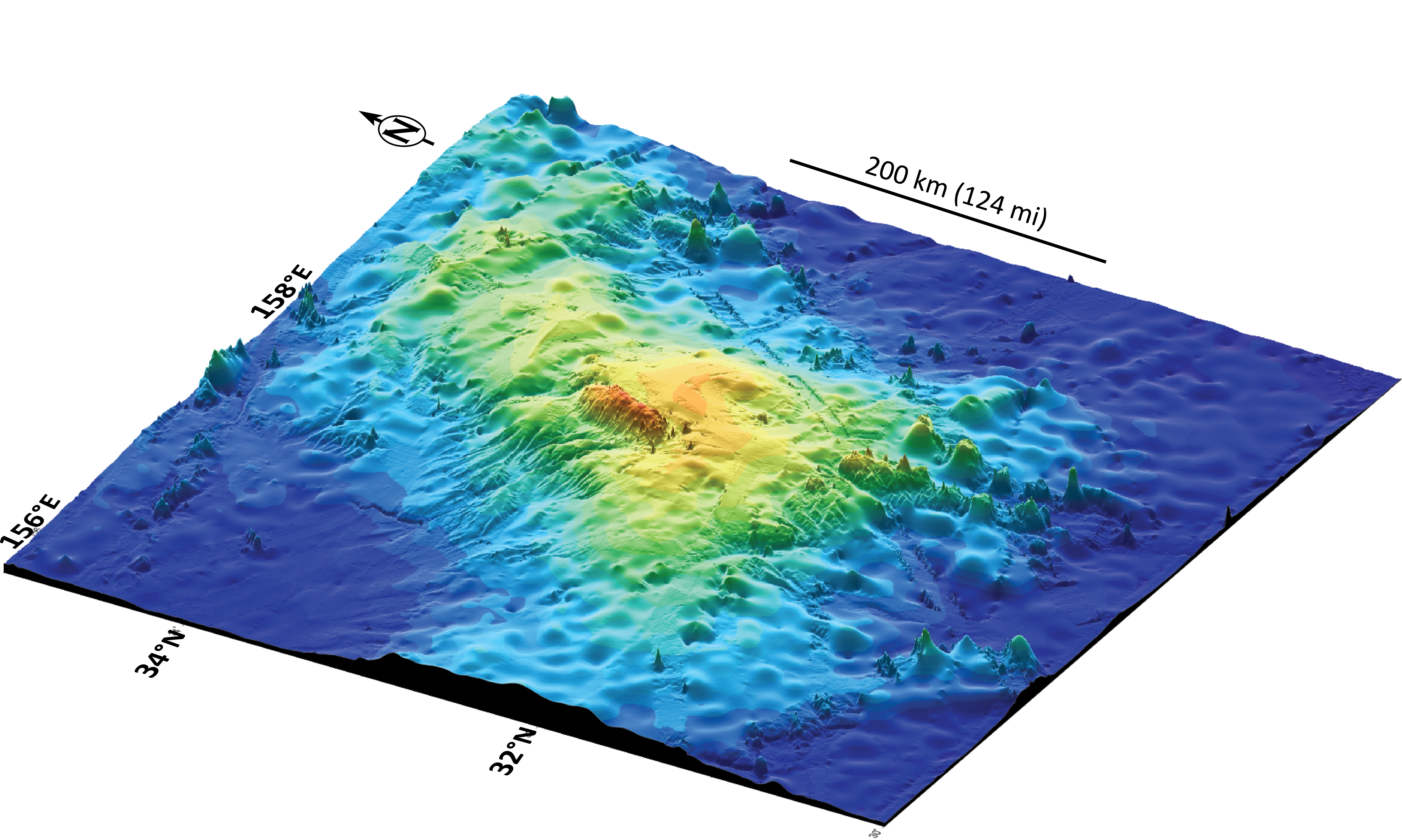In 2013, geologists claimed they had confirmed the existence of the “largest single volcano” ever discovered on planet Earth: a geological monster named Tamu Massif. Located below the Pacific Ocean about 1,609 kilometers (1,000 miles) east of Japan, the deepsea giant spans an area of over 310,000 square kilometers (120,000 square miles) – that’s larger than the entire United Kingdom.
The discovery of Tamu Massif’s scale rocked the geological world as it showed for the first time that Earth could spawn volcanoes comparable in size to the giant volcanoes found on Mars. However, later research suggested these bold assumptions were based on unsteady ground. In 2019, a study indicated that Tamu Massif was a very different breed of volcanic mountain.
While it was previously assumed to be a single shield volcano, formed by a thin lava flow that swamped a large area, their work suggested Tamu Massif was actually the product of seafloor spreading, a geologic process in which new oceanic crust is formed through the upwelling of magma between tectonic plates, causing the ocean floor to gradually spread apart.
In other words, Tamu Massif was revealed to be a huge heap of oceanic crust, not a single volcano.

Seafloor 3-D image of Tamu Massif from the groundbreaking study in 2013.
Image credit: Will Sager
“The largest volcano in the world is really the mid-ocean ridge system, which stretches about 65,000 kilometers around the world, like stitches on a baseball,” William Sager, a geophysicist at the University of Houston and senior author for 2019 study, said in a statement.
“This is really a large volcanic system, not a single volcano,” explained Sager.
“That’s awesome, because that’s how science should work,” seafloor geologist at the NOAA Pacific Marine Environmental Laboratory in Oregon Bill Chadwick, who was not involved with the study, told National Geographic at the time. “You go with what the evidence is telling you, regardless of the fact that it contradicts something you believed before.”
Tamu Massif “is still extraordinary, even if we can’t claim the superlative,” added Sager to National Geographic.
In light of their findings, the researchers proposed that the title of the world’s biggest shield (and active) volcano should be returned to Mauna Loa of Hawai’i.
Covering an area of around 5,100 square kilometers (1,969 square miles), Mauna Loa is just about 1.6 percent the size of Tamu Massif, but it’s significantly taller. Much of Mauna Loa is submerged in the Pacific with just 4,170 meters (over 13,681 feet) of mountain peering above sea level. However, counting its height from the bottom of the ocean to its summit, it would be taller than Mount Everest, measuring a massive 9,144 meters (30,000 feet).
Mauna Loa isn’t afraid to let its presence be known, either. In November 2022, it erupted for the first time in 38 years. Once again, this feat overshadowed poor old Tamu Massif, which has been extinct for millions upon millions of years.
Source Link: Earth's Biggest Volcano Was Briefly Usurped By A Deep Sea Imposter